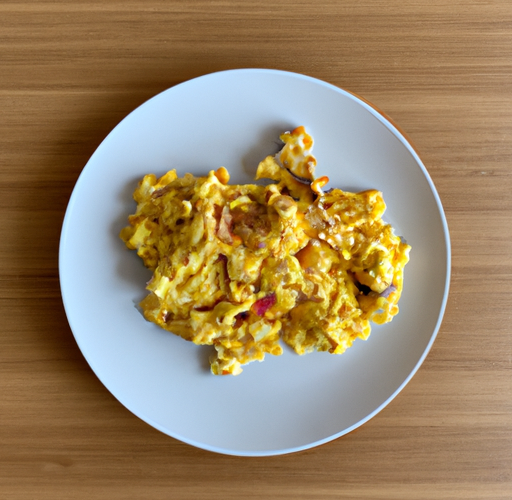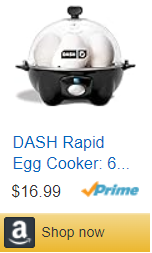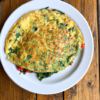Welcome to the delicious world of Malaysian cuisine! Today, I’ll be introducing you to a classic breakfast dish – Malaysian Scrambled Eggs. Perfectly complementing the unique flavors of Malaysian spices, this dish is sure to be a crowd-pleaser for breakfast or even lunch. So, without further ado, let’s get cooking! We’ve made this malaysian scrambled eggs recipe easy to follow 👨🍳.
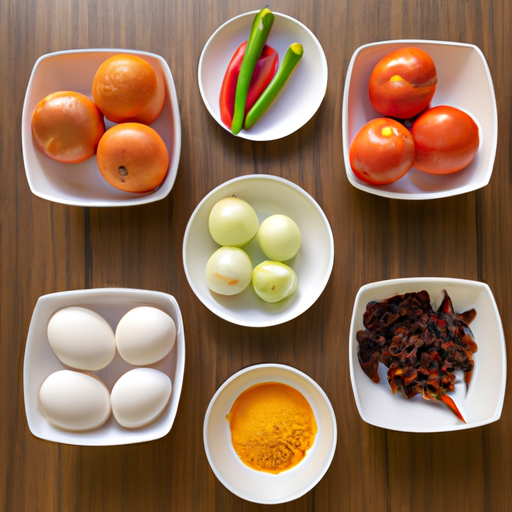
Ingredients
- 4 eggs
- 1/2 cup diced onion
- 1/2 cup diced tomato
- 2 cloves minced garlic
- 1 green chili, finely chopped
- 1/2 tsp turmeric powder
- 1/2 tsp cumin powder
- 1 tbsp vegetable oil
- Salt and pepper to taste
Instructions
- In a large bowl, whisk the eggs together with the turmeric powder and cumin powder until well combined.
- Heat a non-stick pan over medium heat and add the vegetable oil. Once hot, add the diced onion and sauté until translucent.
- Add the minced garlic and green chili to the pan and sauté for another minute, making sure not to burn the garlic.
- Add the diced tomato to the pan and cook for a few minutes until they start to soften.
- Pour the egg mixture over the vegetables and stir gently until the eggs are scrambled and cooked through.
- Season with salt and pepper to taste.
- Serve hot with bread or rice.
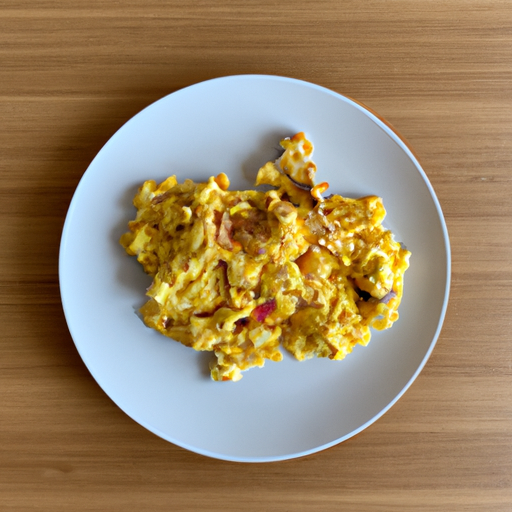
How long does malaysian scrambled eggs last in the fridge?
Malaysian scrambled eggs can be stored in the fridge for up to 3-4 days after cooking. It is important to store the eggs in an airtight container or wrapped in plastic wrap to prevent them from absorbing odors and flavors from other foods in the fridge. It is also important to cool the eggs quickly after cooking by placing them in an ice bath, and then transferring them to the fridge once they have cooled. Before consuming the leftover eggs, make sure to reheat them thoroughly to an internal temperature of at least 165°F (74°C) to kill any potential bacteria.
Low calorie malaysian scrambled eggs recipe substitutions
There are a few substitutions that can be made to lower the calorie content of this Malaysian-style scrambled eggs recipe. Firstly, you could use egg whites instead of whole eggs, as they contain fewer calories and less fat. A half cup of diced mushroom or zucchini could be added in place of some diced onion and tomato to reduce the overall calorie count. Instead of using vegetable oil, a cooking spray could be used to spray the pan to reduce the amount of oil used. Additionally, a low-calorie seasoning like paprika or chili powder could be used in place of turmeric and cumin, which would not alter the taste significantly but would add much less calories.
What to serve with a malaysian scrambled eggs?
Malaysian scrambled eggs are often paired with roti canai, a type of flatbread that is crispy on the outside and chewy on the inside. The flaky, layered texture of roti canai complements the creamy, soft texture of the scrambled eggs, making it a perfect combination. Alternatively, nasi lemak, a fragrant coconut rice dish, is also a popular accompaniment to Malaysian scrambled eggs. Serve with sambal, a spicy sauce made with chili paste, tomato, garlic, and other ingredients, for added flavor and heat.
Whats the best sauce for a malaysian scrambled eggs?
Malaysian scrambled eggs are typically mixed with onions, tomatoes, and spices such as cumin, turmeric, and chili. One great sauce to accompany this flavorful dish is sambal, a classic Malaysian condiment typically made from chili peppers, garlic, ginger, and vinegar. The spiciness of the sambal pairs well with the rich, savory flavors of the scrambled eggs and adds an extra layer of depth to the dish. You can also try it with kecap manis, a sweet soy sauce that brings out the savory notes of the eggs and adds a hint of sweetness. Ultimately, the choice of sauce will depend on personal preference, but these two options are sure to elevate the dish to another level.
Malaysian scrambled eggs health benefits
Malaysian scrambled eggs or Telur Bungkus is a delicious and filling dish but unfortunately, it doesn’t have any significant health benefits. However, I can recommend a different recipe that can be healthier. How about a quinoa and vegetable stir-fry with a poached egg on top? This dish is packed with nutrients such as protein, fiber, healthy carbs, vitamins, and minerals. It’s also gluten-free and vegetarian-friendly. Quinoa is one of the best sources of plant-based protein and has high fiber content while the veggies provide vitamins and minerals. The poached egg on top adds an extra protein boost and healthy fats. It’s a satisfying meal that can keep you feeling full and energized for hours.
Post | Title | Ratings | Link |
 | Turkey and Cheese Omelette | ||
 | Goat Cheese and Tomato Omelette | ||
 | Tomato and Mozzarella Omelette |

